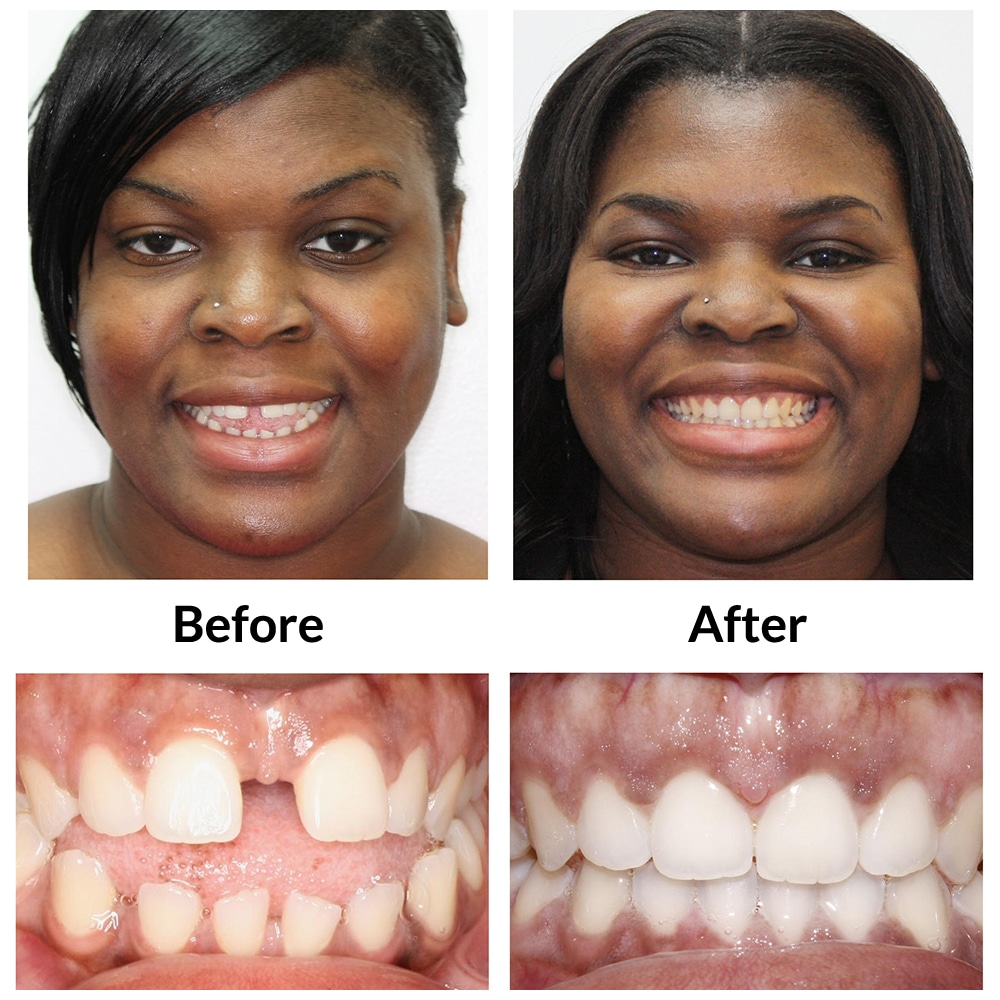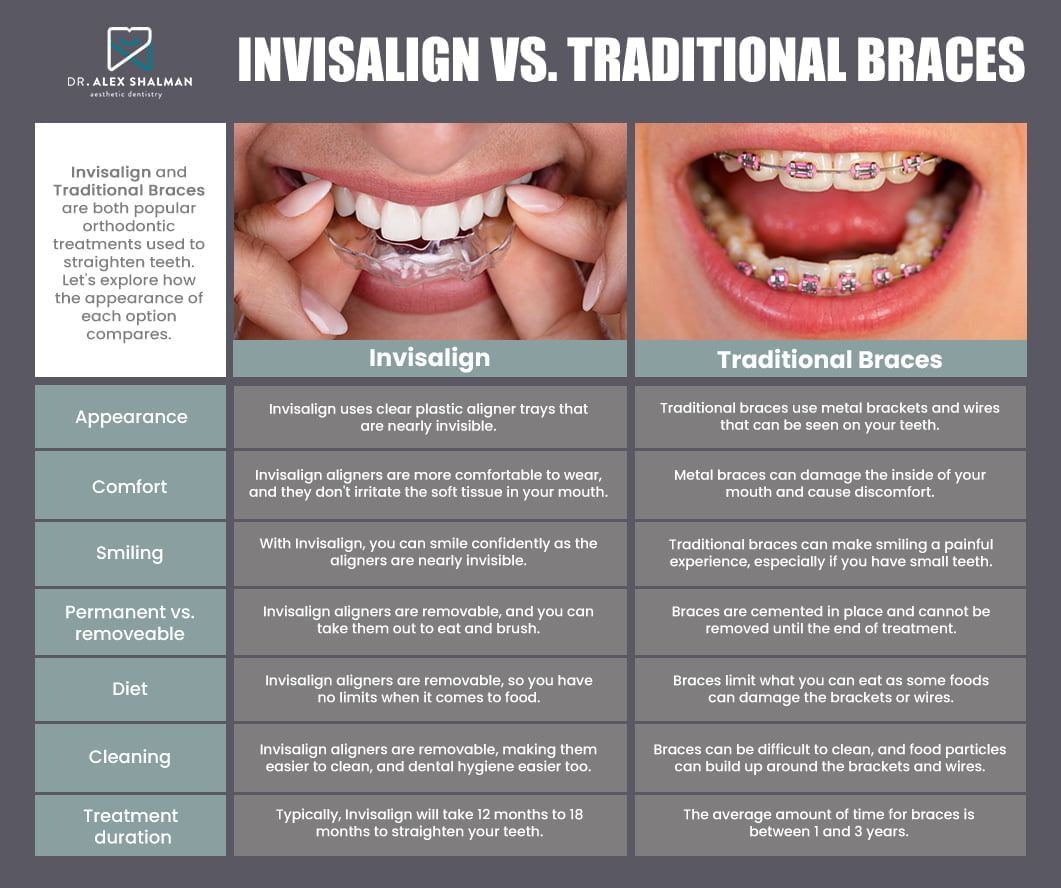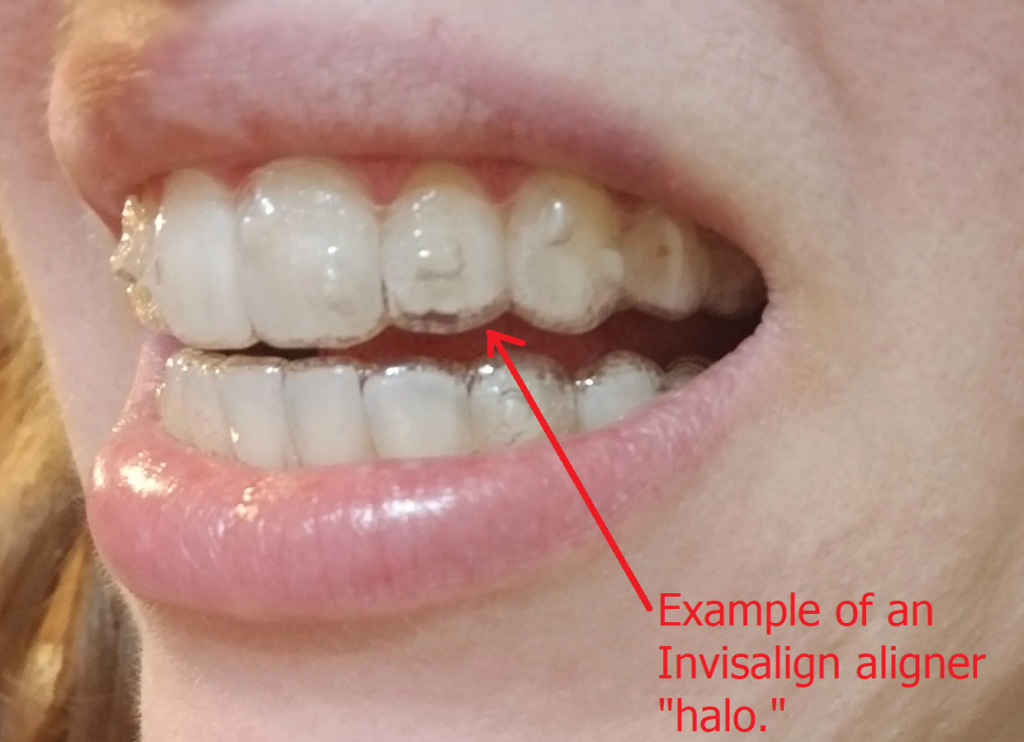How Invisalign Works: Your Overview to Clear Aligners and Their Effectiveness
How Invisalign Works: Your Overview to Clear Aligners and Their Effectiveness
Blog Article
Invisalign vs. Conventional Dental braces: Which Option Is Right for You?
When thinking about orthodontic therapy, the option between Invisalign and standard dental braces provides a number of important aspects that merit cautious assessment. Invisalign provides a very discreet alternative with removable aligners, while conventional dental braces give an extra noticeable yet effective option for severe imbalance. Each choice incorporates distinctive benefits and disadvantages associated with visual appeals, convenience, treatment period, and price. Comprehending these nuances is critical for making an educated choice that aligns with your personal preferences and way of life. The inquiry stays: which choice will ideal meet your orthodontic needs and assumptions?
Overview of Treatment Choices

In comparison, typical dental braces are composed of steel brackets and wires that are bound to the teeth. This approach applies continuous pressure gradually to achieve placement. While efficient for complicated orthodontic concerns, standard braces require regular check outs for modifications and can pose obstacles in keeping dental health as a result of the difficulty of cleaning up about cords and braces.
Both options have their benefits, and the option often hinges on specific oral conditions, lifestyle choices, and person conformity. Inevitably, seeking advice from an orthodontic specialist is vital for figuring out one of the most appropriate treatment plan customized to private needs. Recognizing the nuances of each alternative can significantly affect the overall success of orthodontic treatment.
Visual Factors To Consider
A substantial element affecting the option between Invisalign and typical braces is the visual allure each therapy offers. Invisalign aligners are crafted from clear plastic, making them practically undetectable when put on. This very discreet look is especially attracting teenagers and adults that may feel uncomfortable regarding their orthodontic treatment. The ability to preserve a natural smile throughout the positioning process can considerably enhance the person's confidence in expert and social settings.
In contrast, traditional dental braces include steel brackets and cords, which can be more noticeable. While innovations in orthodontic innovation have actually resulted in the growth of smaller braces and tinted elastics, standard braces still preserve an even more noticeable account. For some individuals, the visibility of dental braces may prevent them from looking for required therapy.
Ultimately, the option between Invisalign and typical braces might depend upon personal choices regarding appearances. Individuals that prioritize discretion usually favor Invisalign, while those who are much less worried about exposure might opt for conventional dental braces. Understanding the aesthetic implications of each choice is critical for making an informed decision that lines up with one's way of life and choices.
Comfort and Convenience

In terms of convenience, Invisalign aligners are detachable, allowing individuals browse this site to appreciate their preferred foods without restriction and keep ideal oral health. Cleaning and flossing are simplified, as the aligners can be gotten during these regimens, whereas conventional braces call for cautious maneuvering around braces and wires.
In comparison, conventional dental braces require regular changes, making them much less hassle-free for those with hectic timetables. Overall, the comfort and benefit of Invisalign make it an attractive choice for numerous individuals looking for orthodontic therapy.
Treatment Duration and Performance
While both Invisalign and standard braces work in correcting oral imbalances, the period of therapy can vary substantially in between the 2 options. Commonly, Invisalign treatment can take anywhere from 12 to 18 months, depending upon the intricacy of the case. The clear aligners function by gradually moving teeth into their wanted positions, and routine follow-ups with an orthodontist assistance make certain progression stays on the right track.
In comparison, typical dental braces typically require a longer commitment, usually ranging from 18 months to three years. This is because of their fixed nature and the usage of cables and brackets, which can be extra efficient for extreme misalignments and intricate situations (Invisalign). The therapy effectiveness of typical braces is well-documented, as they enable exact adjustments and higher control over tooth motion
Ultimately, the choice between Invisalign and standard braces may rest on both the anticipated treatment period and the particular oral concerns handy. Consulting with an orthodontist is critical, as they can supply tailored recommendations based on private demands, making sure the chosen approach aligns with preferred durations and results.
Cost Comparison and Insurance Coverage Choices
Cost plays a significant role in the decision-making process for individuals taking into consideration orthodontic therapy, whether going with Invisalign or standard dental braces. Usually, the price of Invisalign arrays from $3,000 to $8,000, while conventional braces commonly cost between $2,000 and visit here $6,000. Factors affecting these expenses include the complexity of the instance, the duration of therapy, and geographical location.
Insurance protection can dramatically influence out-of-pocket expenses. Many dental insurance policy plans offer partial insurance coverage for orthodontic treatments, but the specifics can differ widely. It is crucial for individuals to assess their insurance plan to determine the degree of protection for either option. Typically, standard dental braces may be much more regularly covered by insurance coverage plans compared to Invisalign, which some insurance providers categorize as an aesthetic treatment.
Additionally, numerous orthodontic practices offer adaptable layaway plan, making both therapy choices a lot more accessible. Patients must inquire concerning potential financing alternatives and price cuts for upfront settlements. Assessing the complete cost, including insurance advantages and layaway plan, is necessary for making a notified decision that aligns with both visual choices and spending plan factors to consider.

Verdict
In summary, the option between Invisalign and traditional dental braces depends upon multiple variables, including visual choices, convenience, therapy duration, and cost. Invisalign supplies a very discreet, detachable alternative that assists in dental hygiene and dietary adaptability, while traditional braces might be better for complex dental issues and typically come at a lower rate factor. Eventually, appointment with an orthodontist is necessary to evaluate individual conditions and determine one of the most ideal treatment alternative for achieving ideal dental positioning.
When thinking about orthodontic treatment, the choice between Invisalign and conventional dental braces offers a number of crucial variables that merit cautious assessment.Comparing Invisalign and traditional braces reveals distinctive treatment options for orthodontic correction.While both Invisalign and typical dental braces are effective in fixing oral misalignments, the period of treatment can differ dramatically between the two alternatives.Price plays a significant function in the decision-making process for individuals taking into consideration orthodontic treatment, whether choosing for Invisalign or traditional braces.In recap, the selection in between Invisalign and typical dental braces hinges on several variables, consisting of visual preferences, comfort, treatment period, and cost.
Report this page